5 Basic Steps in Creating Balanced In-Game Economy
What Is Game Economy and Why You Need It?
A game economy is a virtual economy that configures all game loops in the game (currencies, time loops, XP, levels, pricing, etc.). Different game economies will structure other players’ behaviors within the same game. Making a good game involves a few teams’ collaboration: artists that create look & feel, game designers that come up with mechanics and narrative, and programmers & QA that provide bug-free code. Game economy balancing is key for the whole thing to work—and ideally, it should be done by a Game Economy Designer, who balances all numerical indicators in the game, ties them to each other, and, if necessary, works on monetization to build a robust game economy.
In-game Economy Espertise Set Up
Although in small companies creation of the game economy often becomes a responsibility of a game designer, economic expertise is essential for balancing: it allows to see the big picture and draw parallels with real-life utilizing various scientific methodologies.
In the 2010s, the largest publishers began to hire economists as game economy designers. Room 8 Studio followed this trend by establishing a game economy team led by a professional economist with experience applying scientific methods in various game genres. The article addresses creating an in-game balance and will be attractive to anyone who takes part in making games, especially producers and game designers.
So, what are the basic steps in creating a balanced in-game economy?
- Step 1. Determine basic game values and quantify them
- Step 2. Define investment and non-investment resources
- Step 3. Build a cost system
- Step 4. Create deficit and surplus
- Step 5. Decomposition
- Final Thoughts
Step 1. Determine basic game values and quantify them
We know that time is the leading resource for anyone from the classical theory of value and simply from common sense: there’s never enough of it. Therefore, we will compare all game values to time, placing the latter on the X-axis in our coordinate system. The primary value motivates players to spend time in the game. There are four player types by their most valued in-game actions:
- Explorers, who enjoy discovering areas, going through narrative and learning about hidden places;
- Achievers, who prefer to gain “points”, levels, equipment and other concrete measurements of succeeding in a game;
- Socialisers, who enjoy game’s communicative facilities, and apply the role-playing that these engender;
- Killers, who thrive on competition with other players, and prefer fighting them over bots.
Best games offer a combination of these values to engage each player. In this step, express each of these values in terms of time so that if, for example, a person wants to climb to the top of the leaderboard, they must play the game for a month and go through the entire content. Or if they’re going to shoot all the monsters, they must play for this same month. And so on. We need to calculate these indicators as if for the abstract ideal player, who makes their every move perfectly.
Thus we translate values into functions where the ordinate of the coordinate system is time, and we can have anything at the base, ranging from levels a player passes to the number of dead monsters. Then, knowing how many levels an average player passes in one session and how many they pass per day, we can say, for example, how many weeks 300 levels will generally last.
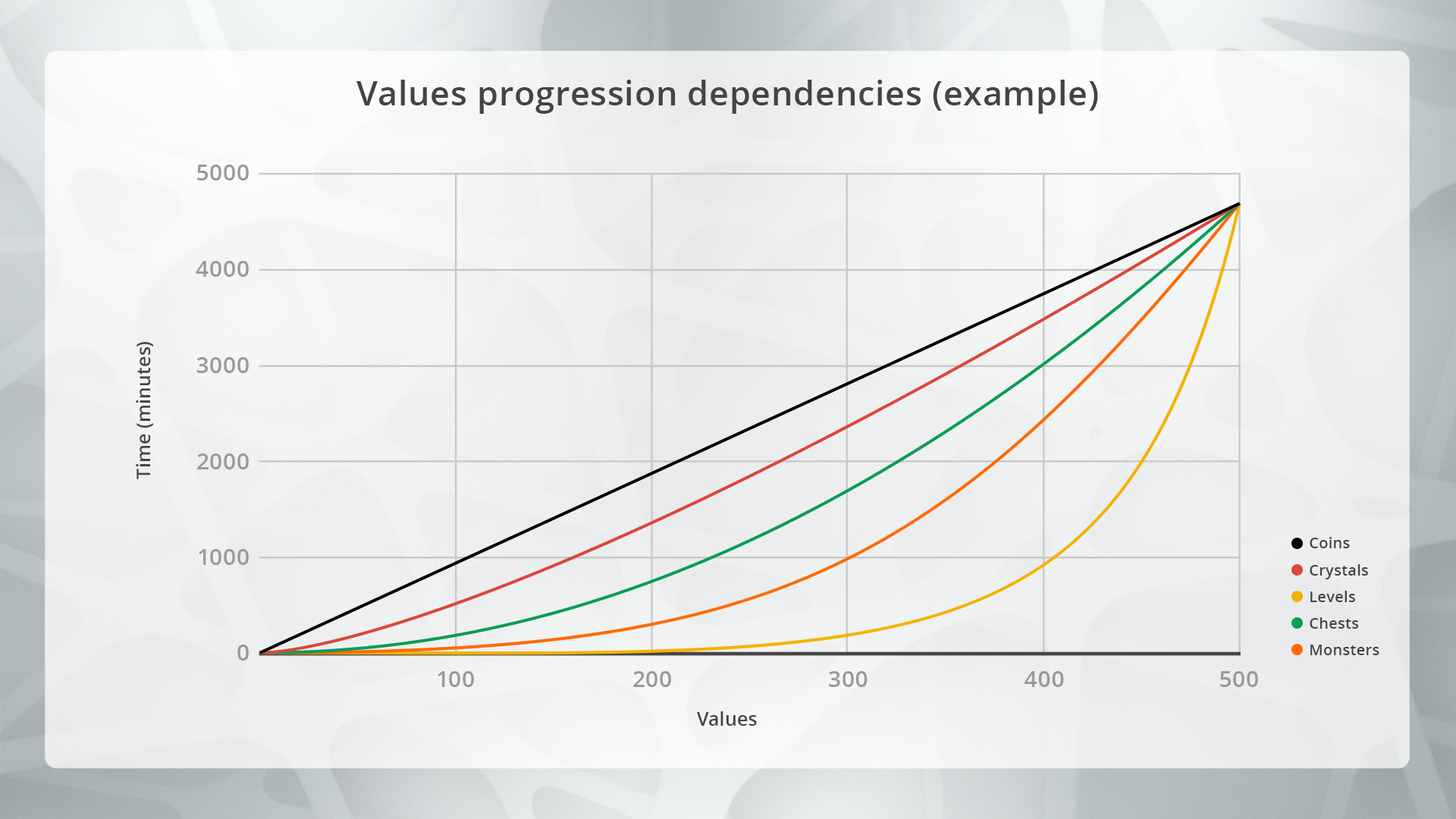
The function of the game’s complexity must be a curve that grows either exponentially or linearly to keep the player interested. In any case, an increase in complexity will take place quickly.
Step 2. Define investment and non-investment resources
Investment resources in the in-game economic structure influence the speed at which the player receives the primary value of the game. Such resources should be expressed in terms of time and then limited to maintain balance. It is crucial not to have investment resources that can bring long-time profits depending on chance or random factors.
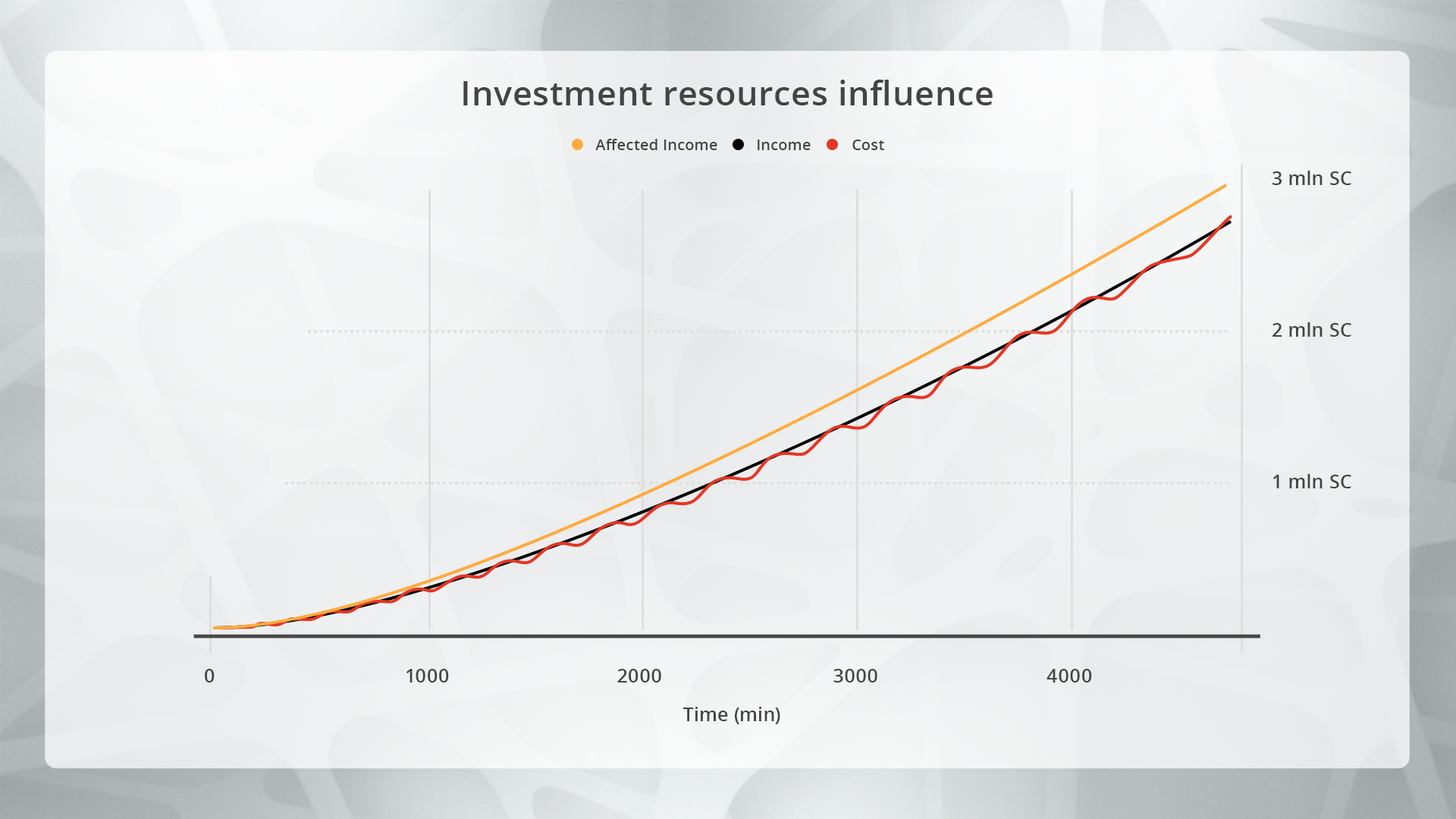
There are specific resources that may slightly affect the development of the character—for example, one-time boosters that help players finish a level a little faster. Although the effect of such boosters is mainly insignificant, they should be taken into account and evaluated in terms of time.
Non-investment resources do not affect the player’s development. For example, skins that just visually delight players. However, they should be considered since players spend money on them, similar to the luxury goods people buy in real life. Sometimes even a character’s experience can be a resource. One can’t spend it, nor buy anything for it, but it may be vital for the game’s progress. For instance, until the player gets a certain amount of experience, they cannot get some upgrade. Thus, these experience points become the resource that may be in deficit. Usually, the game designer during GDD creation describes resources of all types. However, the game economy designer still needs to carefully check all the mechanics to spot any additional not considered resources.
Step 3. Build a cost system
When making progress, players earn in-game currency, called soft currency, or particular content types which they pay for.
Using the dependencies we’ve defined in step one, we can now match game values to each other and the soft currency. Then, build dependency graphs that show that players will need one month or 1 million soft currency to get through all the content. This method allows you to put correct prices and determine how much everything is worth.
For example, a player gets 60 coins for passing a level. How often will they get these 60 coins? When will they collect, for example, the 3,000 coins needed for an upgrade? What will they spend, and at what points? Having such a schedule, the game economy designer adjusts the player’s income and expenses for all the in-game resources.
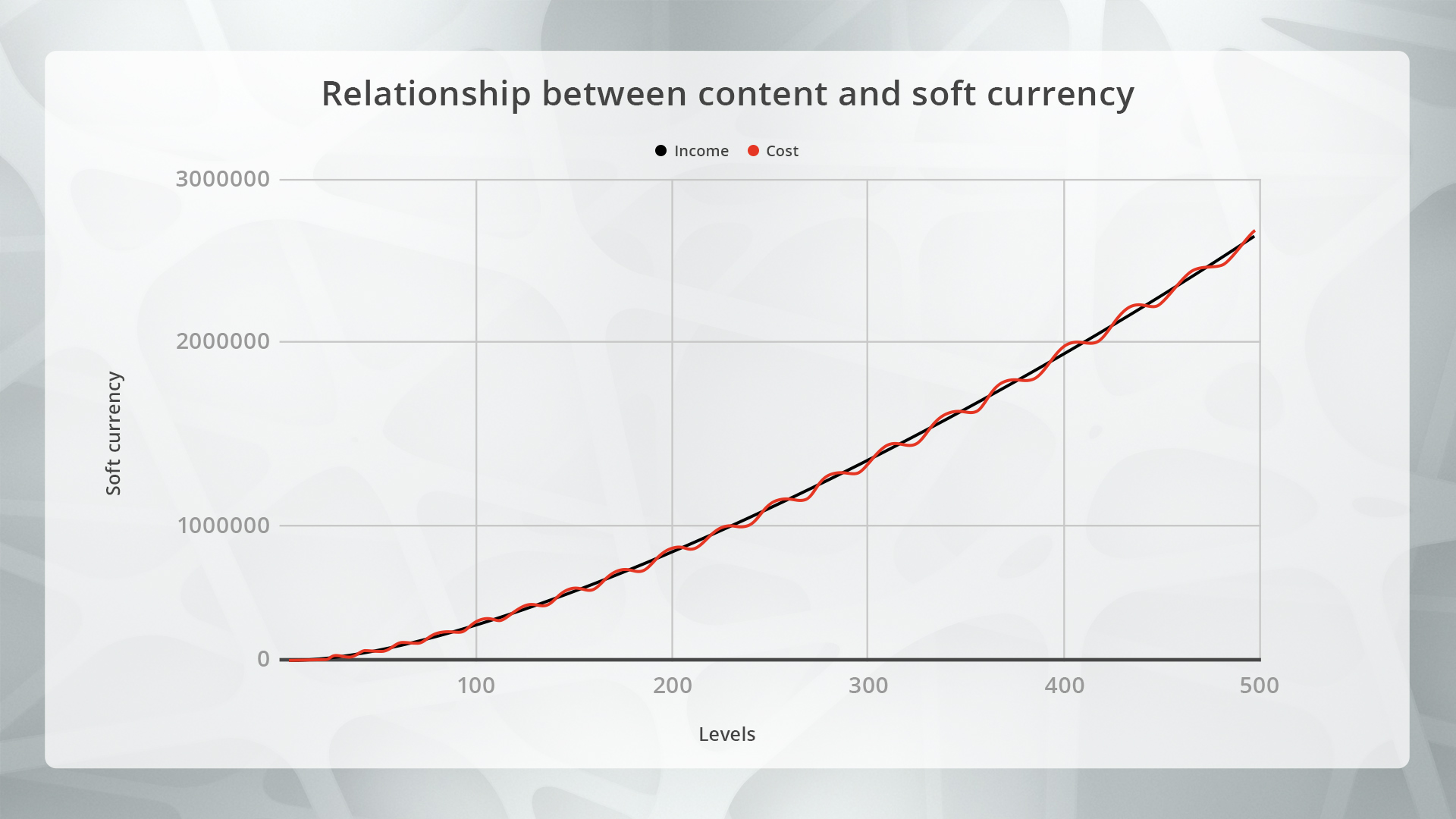
At this stage of balancing game economy, we usually do not operate with absolute numbers but rather with variables and dependencies.
Step 4. Create deficit and surplus
To engage players, let them experience the whole range of emotions. The player won’t feel the buzz of victory if they haven’t tasted the bitterness of defeat because the juice of the game comes from the balance between complex & easy, interesting & boring. Accurate adjustment of this balance allows players’ vivid emotions, such as the last move win.
The expenses curve may vary in a sine wave and income, or one of them can be linear. In this case, the player will experience a deficit in some periods and a surplus in others. Such a situation is similar to the real-life economy and economic cycles. In the overheated economy, the people have a surplus and feel the deficit of the currency during periods of a financial crisis. I also like to implement real-life economic trends in the in-game balance. The reaching of maximum profit earnings by the player is similar to the overheated economy, where the shop increases prices like the households increase the desired salary in a real labor force market. Also, the number of goods offered in the shop is set to the minimum because the overheated economy doesn’t have such a thing as unemployment.
Creating such flow, we influence the player’s feelings because sometimes he has to strain himself and get rewarded.
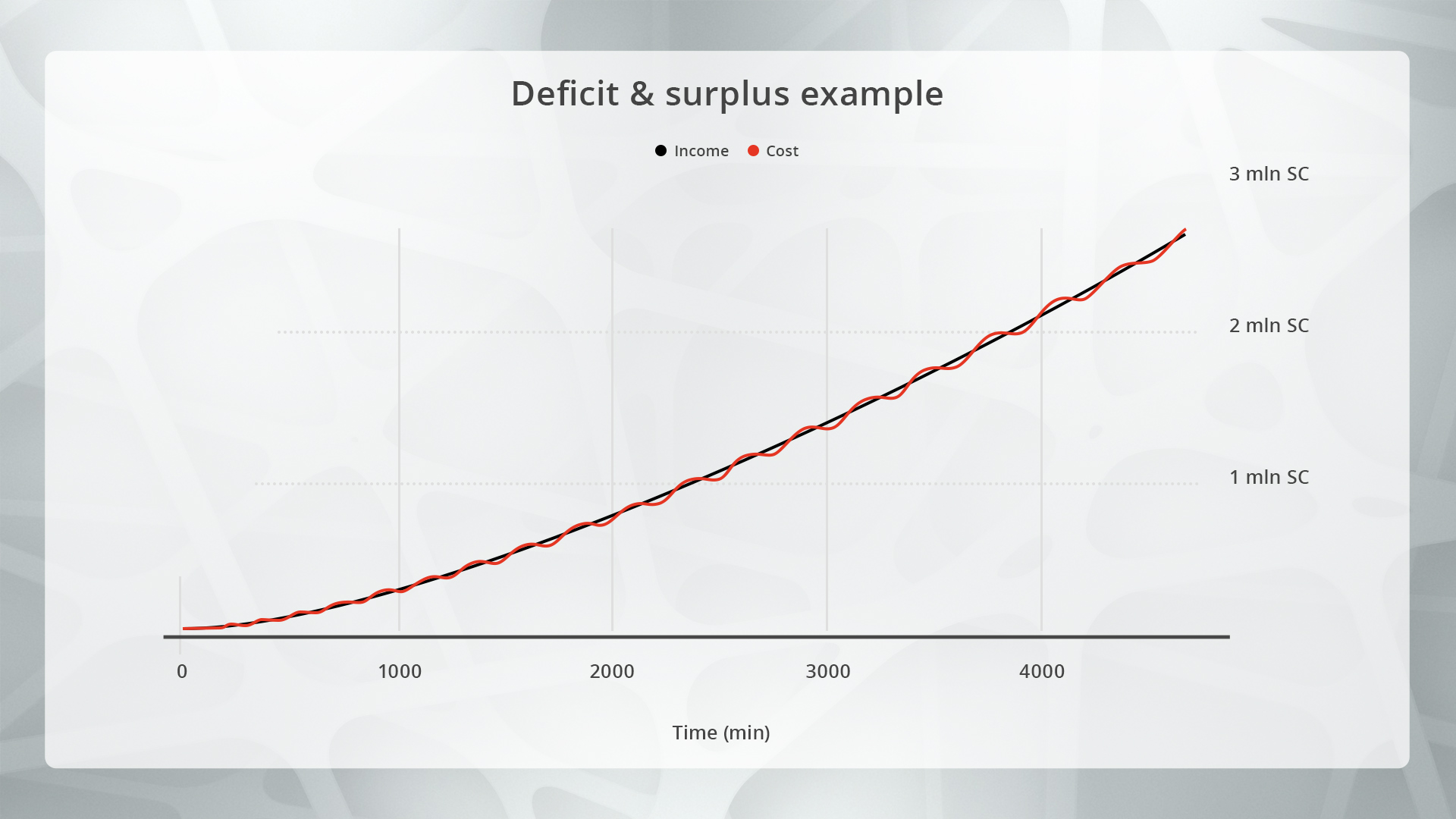
The best practice is to offer 2-3 emotions per game session. However, there are difficult levels when a player feels the only rage during the whole session: rage forces one to pay to get through obstacles, and such tricks can be used for monetization.
Step 5. Decomposition
Now that there are dependency plots for a while ahead, you need to break them up into segments and balance them inside these segments, getting the zero-sum game as the output. This means that if you count all the total revenues and expenses, they will add up to 0, and this is an example of a perfectly balanced economy.
Sometimes, the expenses are designed to be greater than the income in free-to-play games: it forces the player to pay. To avoid pay-to-win pressure, use ‘walls of patience’ — when a player can pass a level, but they have to make an effort or spend significant time to do it.
Alternatively, they can donate or watch an ad, thus obtaining the opportunity to pass the level quickly.
Start decomposition by setting correct timeframes for future balancing:
- The first-time user experience, which must be calculated for every second
- The first day, calculated for each hour
- The first week, calculated for each day
After that, balance things out for every week. If there are any special requirements for the game regarding the deficit, then slightly increase spending.
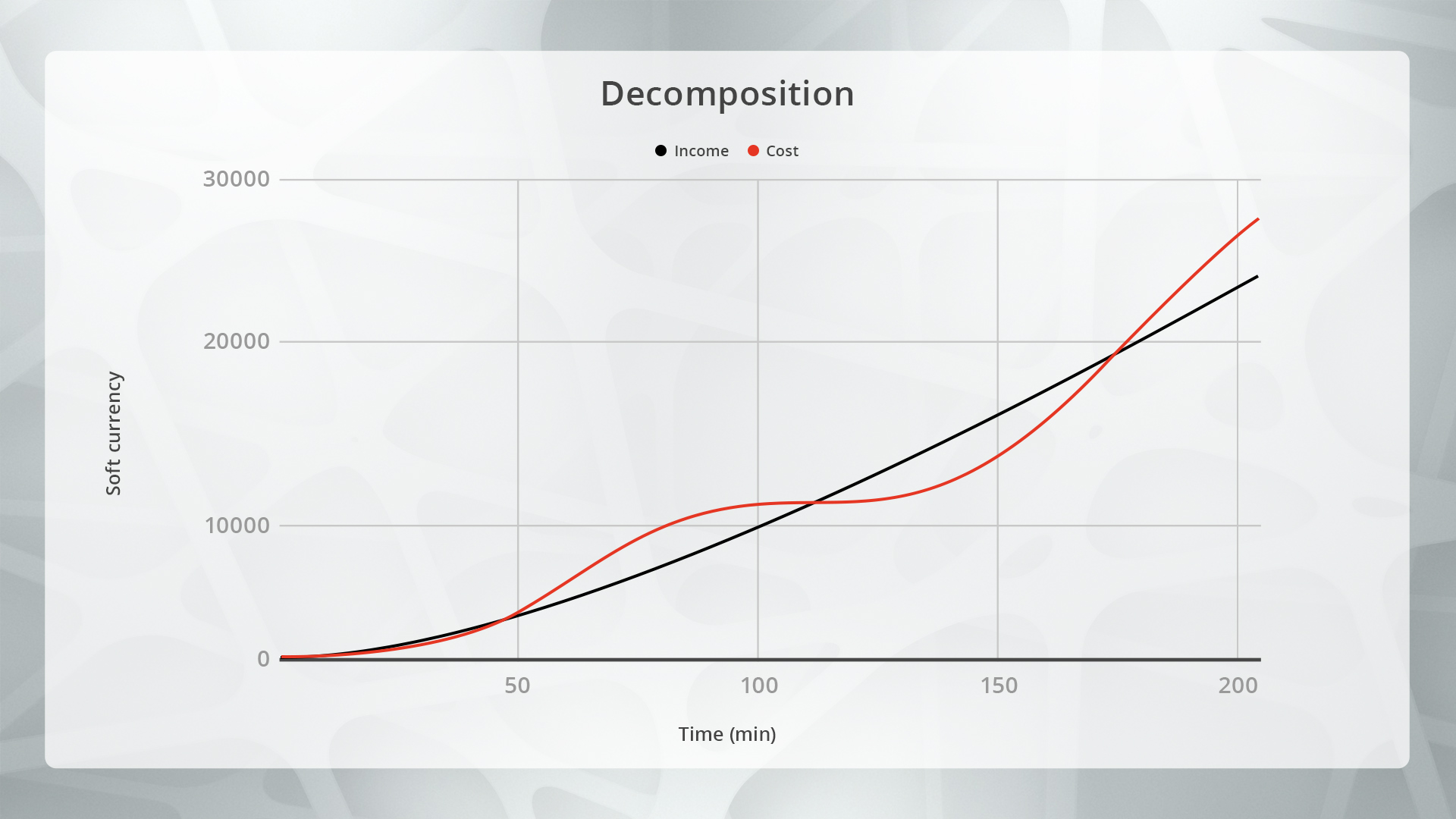
Having worked through all these five steps, you will get a balanced and manageable economy with defined dependencies at the output.
Final Thoughts
Balancing the game economy can seem daunting even for the most experienced game designers. However, there are rules, guidelines, and models you can adhere to that can help you get the best out of your game and indeed get started to build a game economy. If you don’t have the skillset on your team to model the game economy, the task can be easily outsourced.
The guidelines on balancing the game economy we’ve covered are an excellent base for building a balanced game economy. But every game is unique and needs a custom approach, which involves continuous monitoring of players’ behavior, adding new levels, content, sales events, boosts, new mechanics, etc. All these influence your game economy, where any change requires a clear understanding of how it affects players’ behavior, retention, and, ultimately, revenues.
Get expertise on board early to create an in-game economy: our team has been involved in dozens of projects and has successfully utilized scientific tools to ensure revenue flow for our partners and calculate in-game economy algorithms. We’d be happy to help with
- The Key Balancing Report that predicts player’s progression, helps to calibrate difficulty, rewards, set prices, identifies risk points at which players might churn, and defines how players experience a game in relation to the purchase process.
- The Economy Health Check Report that looks at how well a game keeps players returning over time, identifies risk points at which they might churn, and defines how players experience a game in relation to the purchase process.
- Level design



